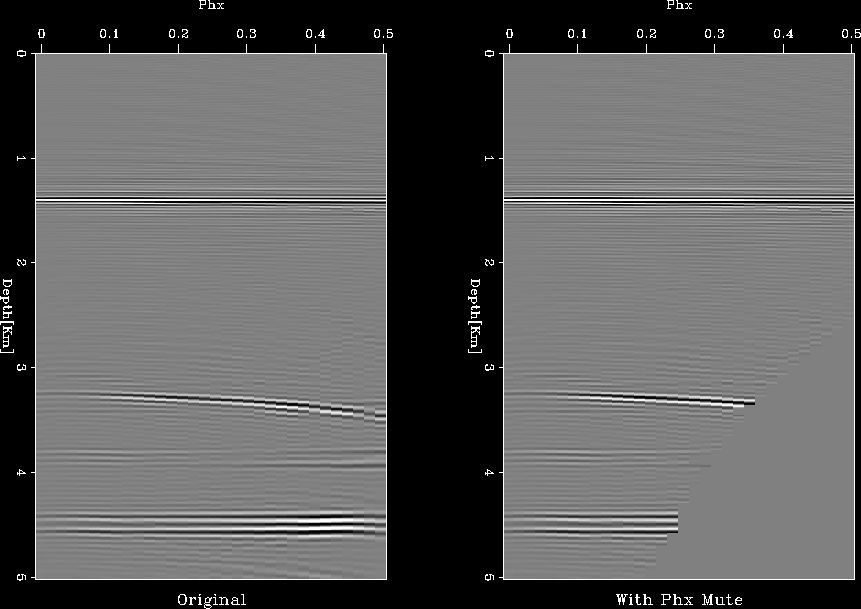




Next: CONCLUSIONS
Up: Gratwick: Amplitudes
Previous: CORRECTION FOR SYNTHETIC AMPLITUDE
Recording geometries limit the maximum offset ray parameter.
However, our migration can put energy in part of the image gathers beyond this maximum aperture.
Therefore a mute needs to be applied to this part of the image gathers.
The maximum
Ph is a function of the coefficients on the right side of equation (1) and is given by equation (3):
|  |
(3) |
where hmax is the maximum half offset,  is the maximum expected geologic dip, z is depth,
and
is the maximum expected geologic dip, z is depth,
and  is the midpoint interval velocity function. This simple relation is a reasonable approximation,
but to truly define the migration aperture, ray-tracing needs to be used to account for the wavefield path above
the reflector. Figure 7 shows identical image gathers, with the right panel having the
mute applied. As expected, the deeper reflectors have a reduced maximum Ph.
is the midpoint interval velocity function. This simple relation is a reasonable approximation,
but to truly define the migration aperture, ray-tracing needs to be used to account for the wavefield path above
the reflector. Figure 7 shows identical image gathers, with the right panel having the
mute applied. As expected, the deeper reflectors have a reduced maximum Ph.
The main use of this
mute is to zero points outside of the migration aperture so that they are not used in our
least-squares fit to find AVO intercept and AVO gradient Gratwick (2001).
ph_mute
Figure 7 Identical image gathers. Right shows the result of
the Ph mute.










Next: CONCLUSIONS
Up: Gratwick: Amplitudes
Previous: CORRECTION FOR SYNTHETIC AMPLITUDE
Stanford Exploration Project
4/29/2001
